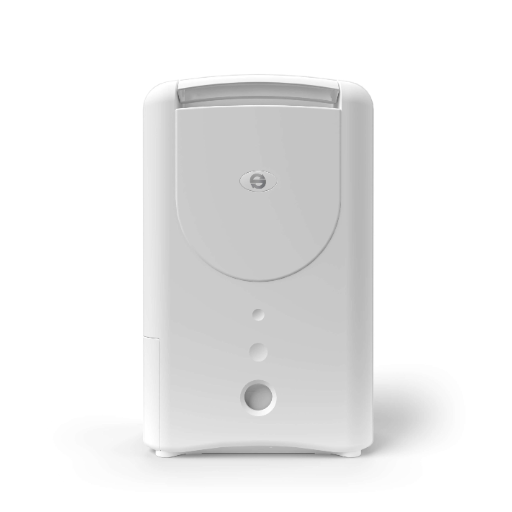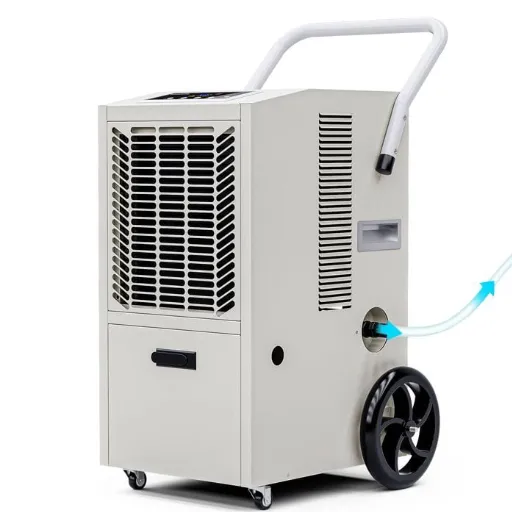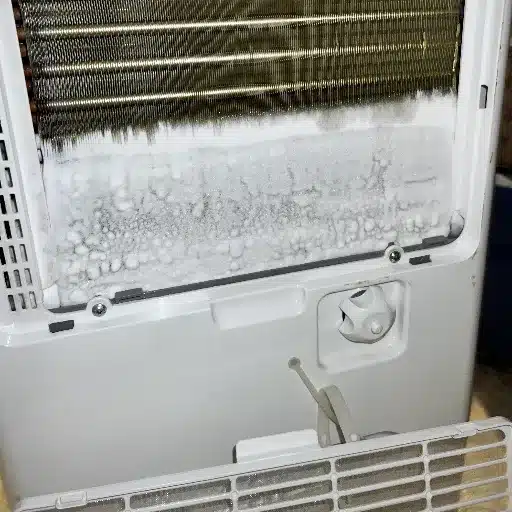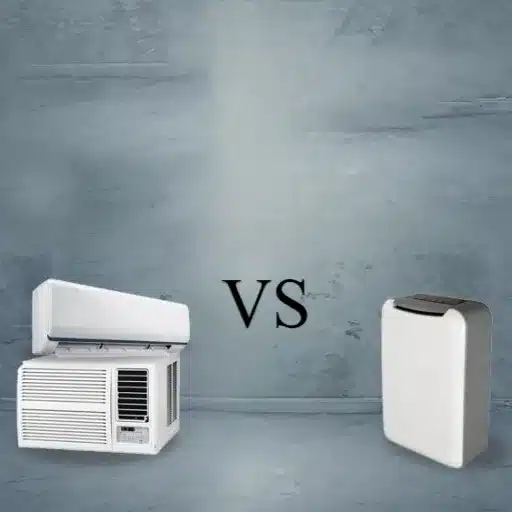Excess humidity in indoor environments is more than just a minor inconvenience—it can lead to serious issues such as mold growth, structural damage, and compromised air quality. To combat these challenges, dehumidifiers have become essential tools for maintaining optimal humidity levels and ensuring a healthier living or working space. Among the various types of dehumidifiers available, rotary dehumidifiers stand out for their efficiency and reliability. This article will explore the different types of dehumidifiers, with a focused analysis of rotary dehumidifiers, detailing how they function, their applications, and the distinct advantages they offer. Whether you’re a homeowner looking to improve your indoor environment or a professional seeking precise humidity control, this guide will equip you with the knowledge you need to make an informed decision.
Key Benefits of Rotary Dehumidifiers
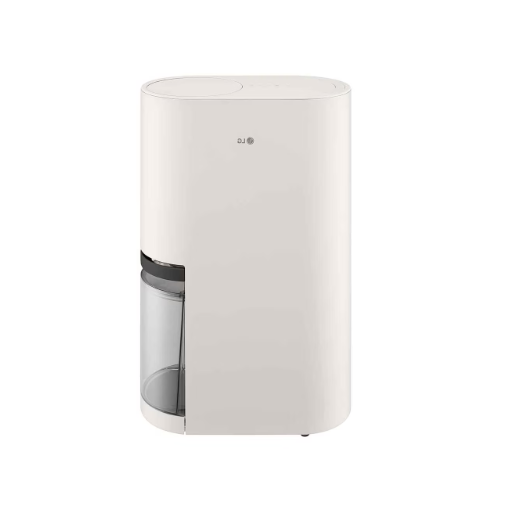
Energy Efficiency of Rotary Models
Rotary dehumidifiers have been designed for extreme energy efficiency. The operation, revolving around a desiccant wheel, lets it minimize energy use while focusing primarily on moisture extraction with relatively less dependence on traditional refrigeration cycles. With no compressors in the system, their energy usage is comparatively lower than compressor-type dehumidifiers. Hence, rotary dehumidifiers become a preferred option in scenarios demanding continuous operation, including industrial or commercial applications.
Recovery and reuse of thermal energy is an important element contributing to operational efficiency. During regeneration, desiccant material utilizes heat, which is usually recovered from another internal source, whereby keeping down its consumption from any external source. Hence, from a practical perspective, rotary dehumidifiers maintain their performance at lower operational costs irrespective of low temperature and relative humidity conditions, where other types of dehumidifiers may not be applicable.
Depending on the application, energy consumption can be reduced by 30-50%, as reported by various research and industry studies for rotary dehumidifiers vis-à-vis conventional systems. Given this ability to save energy along with the advantages of reliability and low maintenance requirements, rotary dehumidifiers prove to be the right choice for users who want to maximize good humidity control with good sustainability and economic efficiency.
Quiet Operation in Various Environments
Rotary dehumidifiers are designed for quiet operation and are suitable for noise-sensitive environments such as offices, residential places, and health care facilities. Their construction integrates the latest design concepts and materials that dampen the noise, while the air flow paths are optimized to reduce noise generation during the operational phase. Depending on the manufacturer and model, sound level measurements under operating conditions for many rotary dehumidifiers have been recorded in the range of about 35 to 50 dB, just slightly louder than a quiet conversation or a library.
This quietness does not affect the performance of the apparatus. They are capable of delivering excellent performances in environments that are even less tolerant of disruption, such as manufacturing plants and laboratories, while keeping noise disturbance. Hence, they function as design solutions wherever there is a conflict between precision and comfort. For example, laboratory humidity must be controlled accurately without disturbing the people within the laboratory, in focus and productivity.
Also, such noise levels are supported by sustainability requirements and acoustic comfort recommendations, which are gaining increasing concern in many sectors. Whether they are placed in controlled industrial conditions or set in a home, rotary dehumidifiers continue to provide reliable humidity control, coupled with ensuring a quieter and pleasant ambiance.
Enhanced Moisture Removal Capabilities
Rotary dehumidifiers excel in moisture removal due to desiccant technology. Desiccant technology works by adsorption of water vapor from air; hence, in chilling and low-humidity environments where a conventional refrigerant-based system may cease to operate efficiently, these dehumidifiers can hold their own perfectly. Thus, consistent humidity control levels and safe storage of moisture-sensitive materials and equipment will assist in proper climate control conditions.
Rotary dehumidifiers boast of high-capacity desiccant wheels, providing ample surfaces for water vapor absorption and thus achieving much higher moisture removal efficiencies than conventional systems. Their continuous regeneration cycle ensures that rotary dehumidifiers can operate continuously, which optimizes their usability even more for applications that demand steady indoor environments such as pharmaceutical storage, data centers, or manufacturing industries.
Apart from technically efficient, rotary dehumidifiers are versatile and scalable. Their modular constructions offer options for integration into a wide array of systems, ranging from small-scale residential setups to large industrial environments. This, combined with the workable precision in hitting target humidity levels, makes it an invaluable solution for conditioning environments for a myriad of purposes.
Common Applications of Rotary Dehumidifiers
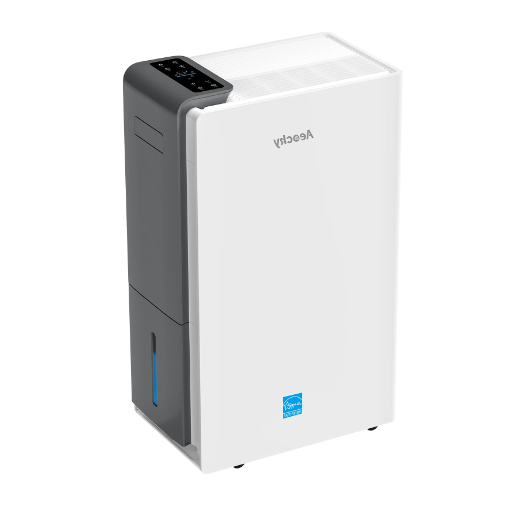
Household Use and Benefits
This has some benefits for use by the residential customer, guaranteeing indoor air quality and preventing damage to household infrastructure from moisture. Five key benefits and uses of rotary dehumidifiers in residential applications are:
- Moisture Control and Prevention of Mold: These moisture levels inside houses, if raised, usually trigger mold and mildew growth, which can cause structural damage and health-related problems. Rotary dehumidifiers keep indoor moisture levels low enough to prevent such problems resulting from mold creation and to protect walls, ceilings, and furniture.
- Unhealthy Air Inside: In absorbing extra humidity, they provide a healthier living environment. An environment with lower humidity will see dust mites and mold spores flying less, thus protecting the respiratory system of those occupying the surrounding area. Studies show that keeping relative humidity levels between 30%-50% is best for indoor air quality.
- Energy Efficiency in Temperature Control: These gadgets lower humidity with the assistance of HVAC systems, making air conditioners work with ease. With less humidity in the air, less energy will be consumed to cool it down, which, upon reduced energy consumption, will lower your electricity bill.
- Protection for Electronics and Valuables: High humidity can cause the corrosion of electronic equipment and damage to electronic devices, musical instruments, paperwork, etc. The rotary dehumidifier protects your valuables from corrosion and damage by maintaining a stable dry environment for them.
- Comfort Enhancement for Daily Living: Usually, high humidity causes a sticky feeling inside the house. By controlling the moisture content in the air, rotary dehumidifiers make indoor areas feel cooler and comfortable, thus reducing the usage of air conditioners.
These are some of the benefits rotary dehumidifiers will render in the provision of a healthy and comfortable environment, making it wise for everyone to have one at home.
Industrial Settings and Their Requirements
Environmental control in industrial settings is of utmost importance, as diverse processes and machinery will have rigorous requirements. High humidity levels in industrial environments pose severe problems such as corrosion of metal parts, decreased operational efficiency of machines, and contamination of moisture-sensitive substances. Levels must therefore be controlled in manufacturing for pharmaceuticals, food processing, electronics, and textiles to ensure both product quality and compliance with industry standards.
Rotary dehumidifiers thus stand nobly to achieve such controlled conditions with the assurance of high-volume moisture removal applied on various scales. To cite an example, pharmaceutical manufacturing requires exacting humidity control to prevent the degradation of hygroscopic materials and the efficacy of the medicines. Electronics is another case where raised humidity levels can lead to condensation that could damage delicate components or disrupt assembly lines. These systems will be ruggedly built and capable of undertaking sustained workloads expected of industrial applications.
The integration of rotary dehumidifier systems into an industrial setup protects the facility’s assets and improves operational efficiency while reducing further repair costs and damages related to humidity. Their advanced newer models have featured energy-saving operational designs and computerized control to automate requirements for optimum performance in a varied industrial working atmosphere. This technological advancement ensures that while the system supports industrial applications in their full developmental requirements, it also abides by the sustainability trends of today.
Specific Environments: Basements and Storage Units
Basements and storage units possess unique environmental characteristics that require proper climate control, mainly through humidity control and temperature regulation. Being enclosed, these spaces have limited air circulation and are prone to excessive moisture. Condensation can cause structural problems in the form of mold, warping of wood, or corrosion of metals, thus putting the stored items at risk as well as the very building itself. Consequently, with respect to such challenges, the market has witnessed the emergence of high-tech dehumidifiers designed for these confined areas, along with special considerations for airflow enhancement and precision sensing to ensure optimum ambient conditions.
Their next significant feature in the enhancement of climate control technologies in such spaces is underpinned by real-time monitoring systems, which employ IoT technologies to collect environmental data continuously and analyze it to allow for efficient regulation by the user of environmental variables such as relative humidity and temperature. Furthermore, many of these modern environmental control systems also utilize energy-efficient compressors and environmentally friendly refrigerants to fulfill their sustainability goal of operating with minimal impact on the environment. By becoming fully automated in their response to changes in ambient conditions, they provide a very reliable solution that is far less prone to human error.
Moving on, in advanced settings, there are multipurpose solutions for moisture problems usually found in basements and storage units. For example, some units provide dual-purpose capabilities of air filtration and dehumidification, so they’re not just keeping moisture down but improving air quality, too, by removing particulate matter and potential allergens. Such systems are needed to protect extremely sensitive materials during long-term storage, such as archival paper documents, electronics, or antique furniture, all of which react severely to environmental variations. This whole life-cycle treatment of controlled environments highlights the importance of detailed customization to meet basements and storage units’ specific requirements, both in terms of structural preservation and sustainable operational efficiency.
How Rotary Dehumidifiers Work
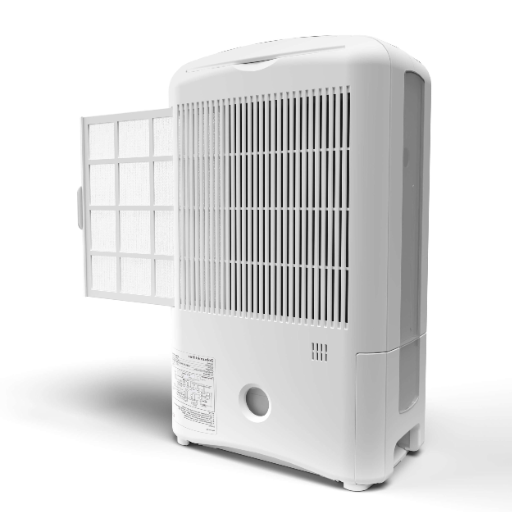
Technology Behind Rotary Dehumidifiers
Rotary dehumidifiers use state-of-the-art desiccant technology to regulate humidity efficiently in both residential and industrial spheres. At the center of the rotary dehumidifier’s functioning is a rotating desiccant wheel, most often silica gel, that absorbs moisture present in the air. The wet air is sucked into the system by a fan and driven through the desiccant. The second section of the rotating wheel is used for regeneration, in which heated air carries off the water vapor in the wheel and reactivates the desiccant for further usage.
Modern rotary dehumidifiers are precision instruments. The air flow rate and the temperature can be varied to further maximize the application of the technology in different environmental conditions. Systems of this kind are useful in cool environments-where refrigerant dehumidifiers will have trouble operating, and will work without defrosting. Recent advances in sensor and automated control technology enable real-time monitoring and adjustment of humidity levels to ensure consistent performance and maximum energy efficiency.
More recent data points to rotary dehumidifiers achieving removal rates higher than those of conventional systems, with energy savings of up to 30%, depending on the usage scenario. Their flexibility squeezes out applications from pharmaceutical storage to the preservation of historical artifacts, requiring a strict hold over humidity. This innovative design, conjoined with reliability in operation, cements rotary dehumidifiers as necessary tools for modern environmental control solutions.
Mechanisms of Moisture Removal
Rotary dehumidifiers function in the adsorption process, where the desiccant absorbs the water vapor from the atmosphere. The central attribute is a wheel that is coated with a hygroscopic material such as silica gel or a zeolite material that has a natural attraction for water vapor. This wheel rotates slowly and constantly rotates through two air streams. The moisture-laden air stream passing through the desiccant is called process air, which gets dried by moisture absorption from the air.
On the other hand, a second air stream called regeneration air passes through a heated section of the wheel, which causes heating of the desiccant material to such an extent that it loses all its moisture and hence regenerates its capacity for further adsorption. This cycle of adsorption and regeneration enables continuous operation; therefore, rotary dehumidifiers are desirable to retain an arbitrary humidity level. Technical research in material science has yielded materials that perform better in moisture absorption and generate energy efficiency for improved performance and reduced operational costs.
This two-stream application delivers highly precise humidity control with the minimum amount of energy required; thus, rotary dehumidifiers find foremost applications in tough environments where strict atmospheric regulation is crucial.
Comparison with Other Types of Dehumidifiers
Based on efficiency, noise, and application, rotary dehumidifiers are compared with refrigerant, desiccant, and thermoelectric dehumidifiers.
|
Aspect |
Rotary |
Refrigerant |
Desiccant |
Thermoelectric |
|---|---|---|---|---|
|
Performance |
High |
Moderate |
High |
Low |
|
Sound Level |
Low |
Moderate |
Low |
Low |
|
Usage |
Industrial |
Residential |
Industrial |
Small spaces |
Factors to Consider When Choosing a Dehumidifier
Capacity and Energy Consumption
When evaluating the capacity of a dehumidifier, it is vital to consider the targeted environment and humidity levels. The capacity of dehumidifiers is usually rated in terms of pints of water they can remove from the air in one day with a specific temperature and humidity level, commonly at 65°F and 60% relative humidity. In high moisture or large square-footage environments, high-capacity dehumidifiers will perform well, while smaller ones may be able to do the job in tighter areas with moderate humidity.
Energy consumption also needs equally critical consideration because it influences operational costs and the efficiency of the dehumidifier. Energy Star dehumidifiers were built to minimize energy consumption while maximizing their performance. For example, a 50-pint Energy Star dehumidifier would consume about 15% less energy than a non-certified unit, resulting in substantial energy cost savings over time.
For even better results, consumers should look at the Energy Efficiency Ratio (EER) of dehumidifiers, where moisture removal is measured against power consumption (with a metric being liters per kilowatt-hour, or L/kWh). A higher EER generally indicates better performance. Also, variable-speed motors coupled with modern digital controls can help further reduce energy consumption by adjusting their output dynamically based on current humidity levels. This flexibility allows such dehumidifiers to be used in environments where maintaining steady air quality is paramount.
Size and Budget Considerations
Sizing is the dehumidifier-a must to be in the peculiar requirements of that space. Dehumidifiers are rated based on moisture extraction capacity, mostly measured in pints per day. For small spaces or low humidity, a low-capacity dehumidifier will suffice. If the area is large or acts like a damp basement or water entry zone, then a high-capacity one is a suitable choice. It has to consider the square feet and ceiling height of the room towards selecting the cause.
Another critical decision-making aspect towards purchasing a dehumidifier is finances. A low-priced unit may be cheaper initially, but these might lack additional features like digital humidity controls, energy efficiency ratings, or variable-speed motors for the best savings over time. A pricier-style will justify its higher prices with lasting ability, reduced energy usage, and best results in air quality control. These are considerations that should be balanced to make a smart capital decision for the application.
In my opinion, I would perhaps prefer decoupling these variables and focusing on identifying a dehumidifier with a good balance among capacity, efficiency, and price. I would start with the square footage calculated to the extent possible, then follow that up by comparing different models across different levels of energy efficiency ratio (EER) and judging the long-term operational expense, so that the best balance can be created in unintended expense. Then one with auto controls and sturdy design is quite key, as that will perform well for me, within my budget.
Maintenance and Care for Rotary Dehumidifiers
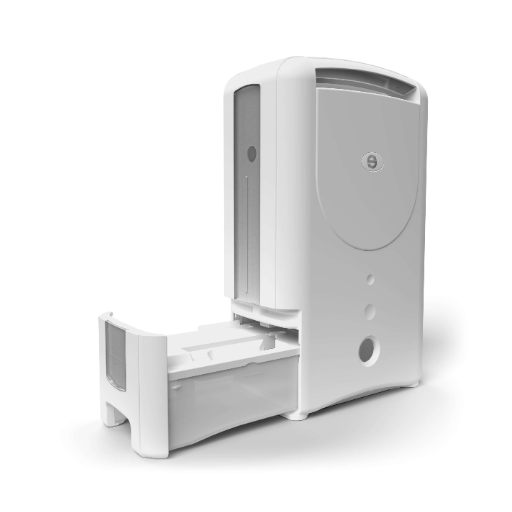
Practical Tips for Maximizing Lifespan
It is imperative to always remain consistent in conducting maintenance work if one wants to maximize the working lifespan of rotary dehumidifiers. The cleaning of the air filters is the very first step, since the air flow is blocked by the fine dust in the filters, leading to inefficiency and tougher work for the irradiative components. It is best to check the filters every month and perform cleaning or replacement actions in accordance with the manufacturer’s instructions. In the same way, dirt and debris must not be allowed to sit on the condenser coils. Use a soft-bristled brush or a specific coil cleaner to get the job done in ensuring maximum heat exchange efficiency.
Checking the water reservoir and drain system regularly is equally essential because the build-up of moisture will foster mold or bacterial growth, which will eventually cause the unit to degrade with time. The water tank should be emptied regularly and cleansed with warm water and a mild detergent to prevent such adverse growth. In cases where the dehumidifiers are set to drain continuously, the hose should be checked for blockages or for being kinked to ensure smooth drainage.
The device should also be allowed to operate within admissible environmental conditions. Rotary dehumidifiers, generally being subjected to the limits of temperature and humidity laid down by the technical manual for best results, preferably should not be pushed to extremes of operation. It is best to keep it in a cool and dry place when not in use. Thus, this fusion of preventive methods along with following the manufacturer’s instructions can stretch the life of the rotary dehumidifier, keeping it alive with steady performance through the long haul.
Regular Cleaning and Maintenance Practices
By following a routine inspection and maintenance schedule, the rotary dehumidifier will perform at optimum levels and have an extended operating life. Always make sure to disconnect the power supply before beginning any maintenance on the dehumidifier to ensure utmost safety. The air filters should be frequently examined for dust and debris, which restrict airflow and reduce efficiency. Clean or replace air filters as instructed by the manufacturer – usually every three to six months, depending on how often the equipment is used and how dusty the environment is.
In addition, the water reservoir needs to be emptied and cleaned often to avoid the development of mold. Clean the water tank with mild detergent and warm water after emptying it, making sure that no chemical residues are left behind. Check the evaporator and condenser coils for dust accumulation since these are the most important components in the dehumidification process. Using a soft brush or compressed air, clean these coils of any dirt or debris, always considering the manufacturer’s instructions.
For further maintenance, ensure that the drain lines remain free from any obstruction since this can either cause water leakage or system inefficiency. Lubricate all moving parts and ensure the security of all electrical connections. Make periodic checks for any wear and tear to the equipment and replace any parts that might have become soggy or outdated due to use or age.
Following these maintenance protocols will increase efficiency and decrease the chance of any mechanical operation failure. Keeping a record of each maintenance job with dates and specifics of what was carried out will allow for effective tracking of the dehumidifier’s condition over its working life. Having been put into practice with detailed knowledge of the exact technical specifications of the unit will guarantee steady and reliable performance while cutting down on long-term expenses.
References
-
ScienceDirect: Evaluation of rotary dehumidifier performance – A detailed study on the performance of rotary dehumidifiers and their air stream separation.
-
ASME Digital Collection: Performance Optimization of Rotary Dehumidifiers – Research on optimizing the performance of rotary dehumidifiers.
-
Harvard ADS: Comparative analysis of a new desiccant dehumidifier – A comparative study on rotary desiccant dehumidifiers for air conditioning in specific regions.
Frequently Asked Questions (FAQ)
Q: What is a rotary dehumidifier, and how does it work?
A: A rotary dehumidifier is a type of dehumidification solution that uses a rotating wheel filled with desiccant material, like silica gel, to absorb moisture from the air. As moist air passes through the drying wheel, the desiccant absorbs the moisture, and the air is returned to the room as dry air. The wheel then rotates to a regeneration section where the absorbed moisture is expelled, often using a heat source to create a cold surface that aids in condensation.
Q: What are the benefits of using a rotary dehumidifier over a desiccant dehumidifier?
A: Rotary dehumidifiers often have higher dehumidification efficiency compared to traditional desiccant dehumidifiers. They can handle larger volumes of air and effectively reduce the overall humidity levels in a space, making them ideal for industrial applications. Additionally, they usually consume less energy, providing a more energy-saving solution for managing moisture levels.
Q: Can a rotary dehumidifier operate effectively at lower temperatures?
A: Yes, rotary dehumidifiers can function effectively at lower temperatures, such as 15°c, making them suitable for environments with cooler air. They can efficiently extract moisture from air at lower temperatures, unlike some traditional dehumidifiers that struggle in such conditions.
Q: How does a rotary dehumidifier eliminate condensation in a room?
A: By maintaining low humidity levels, a rotary dehumidifier prevents the air temperature from dropping below the dew point, which would lead to condensation. By continuously processing moist air and returning dry air to the room, it effectively eliminates the conditions that cause condensation.
Q: Are rotary dehumidifiers energy efficient?
A: Rotary dehumidifiers are known for their energy efficiency, often using less energy than conventional systems for the same dehumidification output. Their design allows them to manage air humidity without the need for excessive energy consumption, making them a cost-effective choice for continuous operation.
Q: What is the role of the heater in a rotary dehumidifier?
A: The heater in a rotary dehumidifier is crucial for regenerating the desiccant material. By heating the air that passes through the regeneration section, the heater helps to release the moisture trapped in the desiccant, which is then expelled as exhaust, allowing the desiccant to be reused for further moisture absorption.
Q: How do rotary dehumidifiers compare to air conditioning systems?
A: While both rotary dehumidifiers and air conditioning systems can reduce humidity, rotary dehumidifiers specifically target moisture removal without significantly cooling the air. Air conditioning systems often lower the temperature while dehumidifying, which may not always be desirable. In contrast, rotary dehumidifiers focus on drying the air, making them suitable for various applications without drastically affecting air temperature.
Q: What is the maintenance required for a rotary dehumidifier?
A: Maintenance for a rotary dehumidifier generally involves regular cleaning of the drying wheel and ensuring that the heater and exhaust systems are functioning properly. Additionally, checking and replacing the desiccant material as needed can help maintain optimal performance and efficiency.

